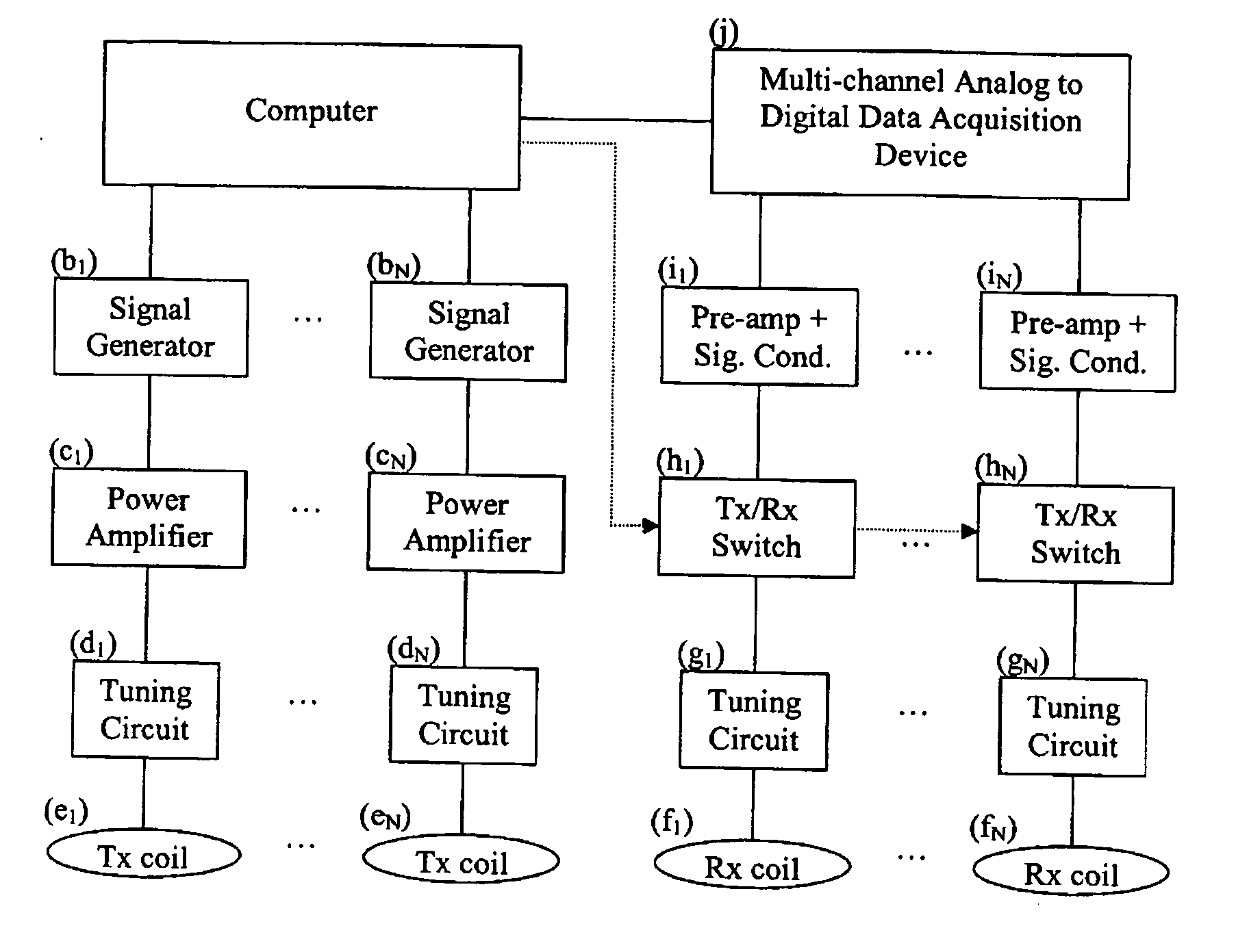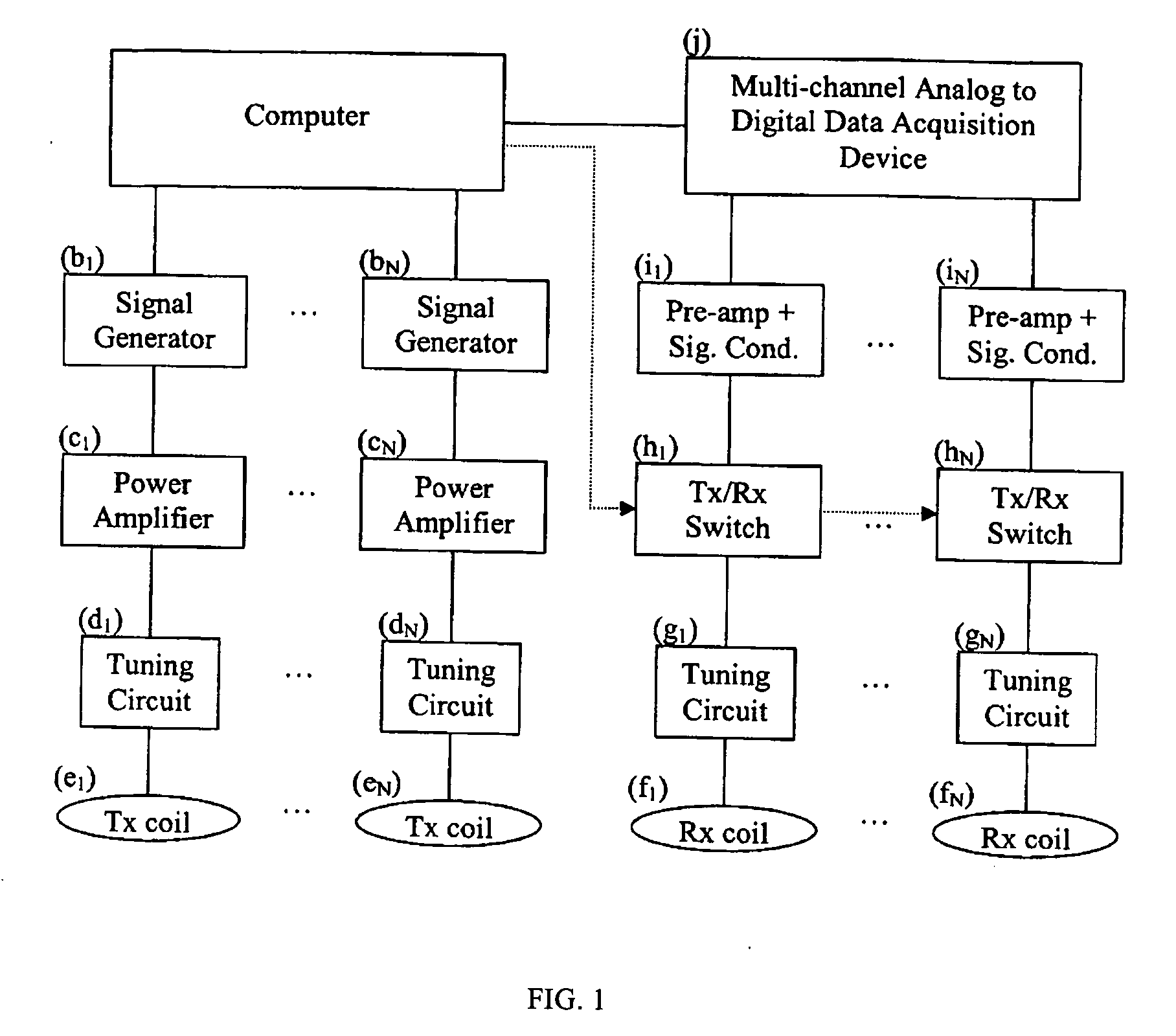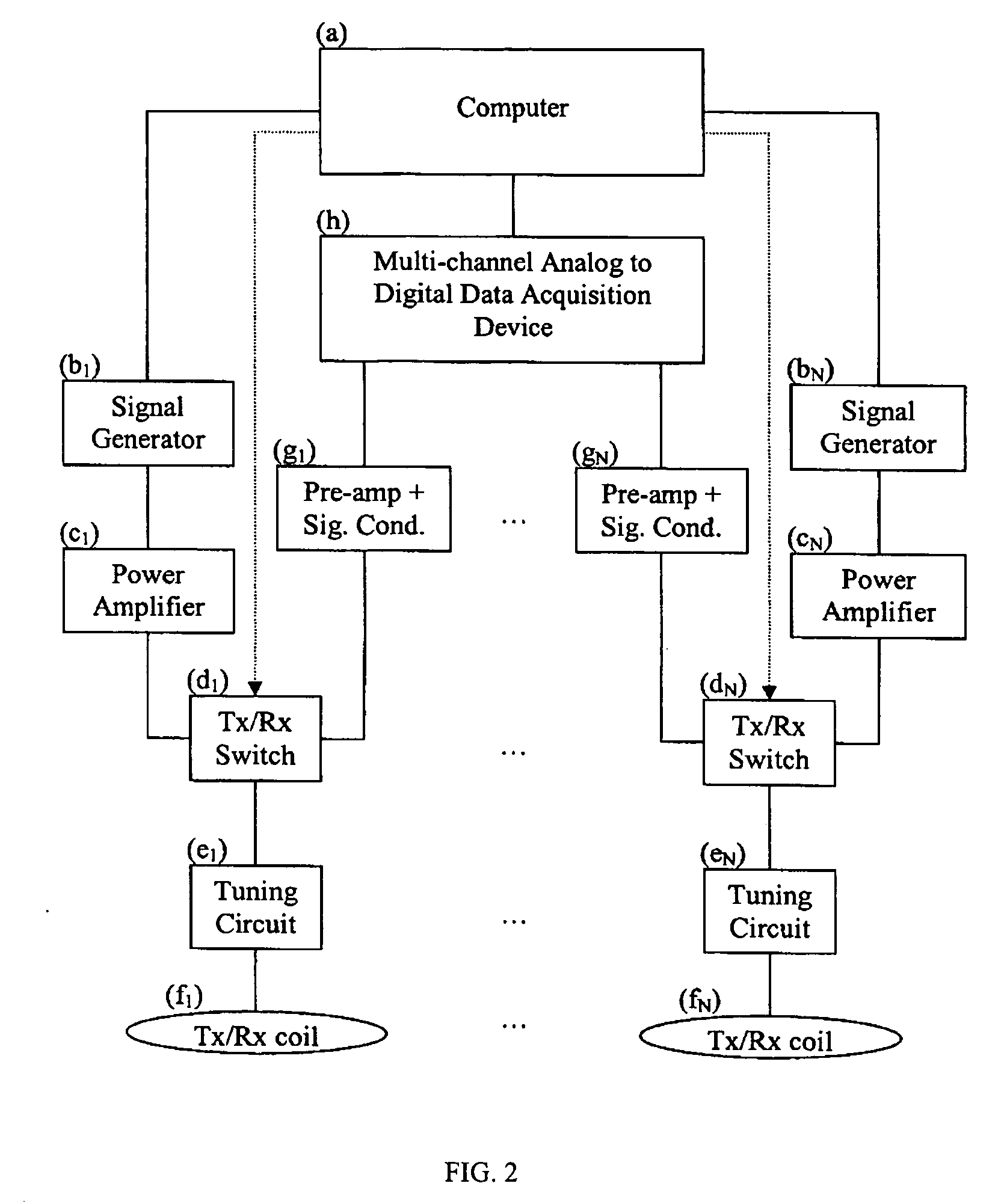Multicoil NMR data acquisition and processing methods
a data acquisition and processing method technology, applied in the field of multi-coil nmr data acquisition and processing methods, can solve the problems of not being able to perform three-dimensional magnetic resonance imaging in a static magnetic field without the application of controlled static magnetic field gradients, existing mri devices and methods are required, and gradient coil assemblies represent a significant portion of the scanner's expense, so as to reduce undesired noise
- Summary
- Abstract
- Description
- Claims
- Application Information
AI Technical Summary
Benefits of technology
Problems solved by technology
Method used
Image
Examples
embodiment
Operation of a Robust Embodiment
[0101] While the invention comprises at least some of the previously described features in various combinations, a better understanding of the invention can be ascertained by reviewing the field implementation of many of these features. Thus, the general procedure for acquiring and processing NMR data using this invention consists of: (1) hardware set-up, (2) data acquisition, (3) data processing. [0102] 1) Hardware set-up preferably comprises arranging the transmit coils and receive coils in a pattern near or around the object or volume of interest, and arranging the other acquisition hardware so as not to interfere with the data collection procedure. The coils may be arranged to maximize coverage of the object or volume of interest, and / or to maximize the diversity of coil field patterns incident across the object or volume of interest. Furthermore, the coil arrays may be arranged to minimize mutual coupling between coils. In addition, the layout of...
PUM
 Login to View More
Login to View More Abstract
Description
Claims
Application Information
 Login to View More
Login to View More - R&D
- Intellectual Property
- Life Sciences
- Materials
- Tech Scout
- Unparalleled Data Quality
- Higher Quality Content
- 60% Fewer Hallucinations
Browse by: Latest US Patents, China's latest patents, Technical Efficacy Thesaurus, Application Domain, Technology Topic, Popular Technical Reports.
© 2025 PatSnap. All rights reserved.Legal|Privacy policy|Modern Slavery Act Transparency Statement|Sitemap|About US| Contact US: help@patsnap.com



